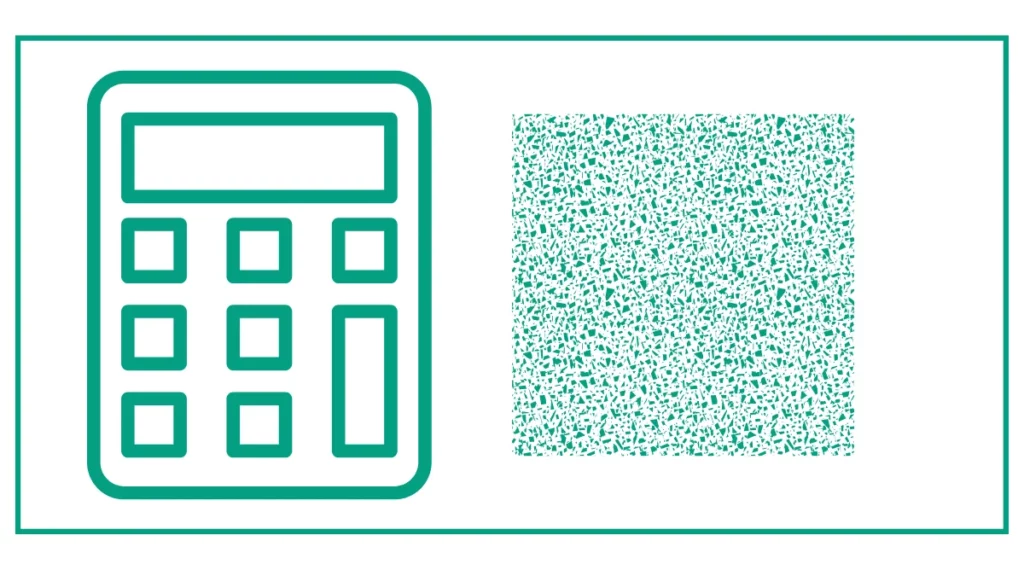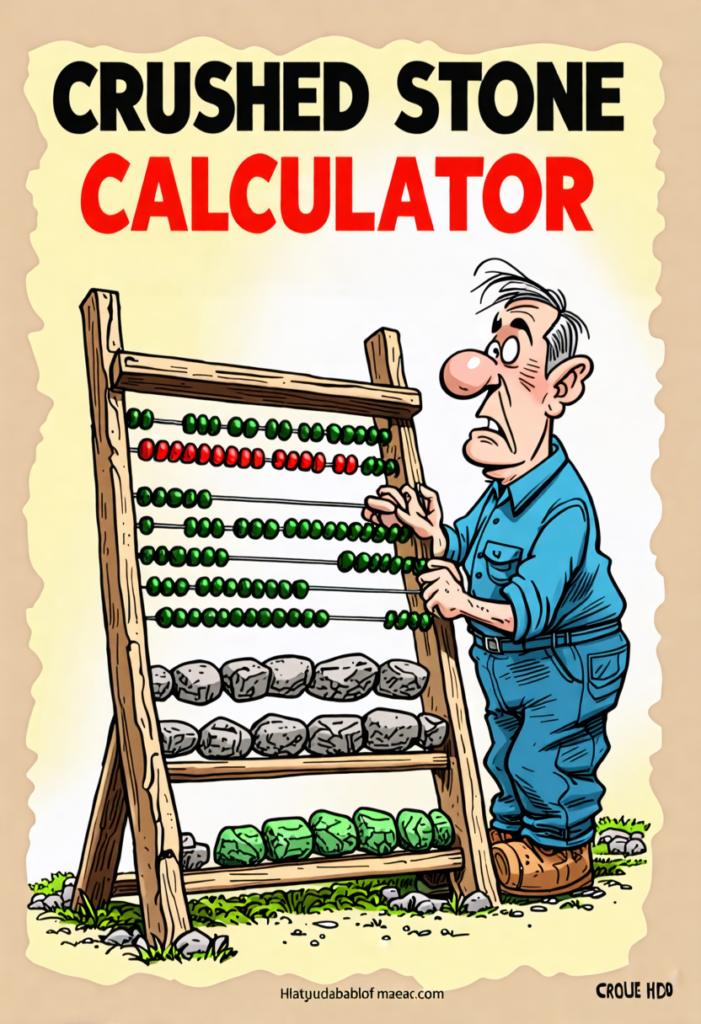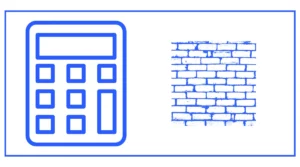Crushed Stone Calculator
The crushed stone calculator helps you calculate the amount of crushed stones that you need for your construction project.
You can calculate it in cubic feet, cubic meters, cubic yards, tons, and kilograms.
Enter the desired length, width, depth, and waste factor to find out how much crushed stone you need.
In case you don’t know, crushed stone comes from stone quarries crushing huge rocks. Crushed stone’s sharp edges help it pack together in roads and prevent erosion, unlike gravel’s softer edges.

You might be interested in finding the number of bricks, amount of sand, or asphalt.
What is a Crushed Stone Calculator?
A crushed stone calculator is a specialized tool designed to help you determine the volume of crushed stone or gravel needed for your landscaping project. By inputting the dimensions of your project area and the desired depth of the stone layer, the calculator provides an accurate estimate of the amount of material required. This takes the guesswork out of ordering materials and ensures you have the right quantity to complete your project successfully.
How to Use a Crushed Stone Calculator
Using a crushed stone calculator is straightforward and can be done in a few simple steps:
- Measure the length and width of the area you plan to cover with crushed stone or gravel.
- Determine the desired depth of your stone layer.
- Enter these measurements into the calculator.
- The calculator will estimate the volume of crushed stone needed in cubic yards, cubic feet, or tons.
Let’s look at an example to illustrate how this works:
Suppose you’re creating a new gravel driveway that measures 20 feet in length and 10 feet in width, and you want the gravel to be 4 inches deep. Here’s how you’d use the crushed stone calculator:
- Enter the length: 20 feet
- Enter the width: 10 feet
- Enter the depth: 4 inches (the calculator will convert this to feet)
- Click “Calculate”
The calculator will then provide you with the volume of crushed stone needed. In this case, you would need approximately 2.47 cubic yards or 3.33 tons of crushed stone or gravel for your driveway project.
Why Use a Crushed Stone Calculator?
Using a crushed stone calculator offers several benefits:
- Accuracy: It provides precise measurements, reducing the risk of over-ordering or under-ordering materials.
- Cost-effectiveness: By knowing the exact amount needed, you can avoid wasting money on excess materials.
- Time-saving: It eliminates the need for complex manual calculations.
- Project planning: Accurate material estimates help in better project planning and budgeting.
Types of Projects That Benefit from a Crushed Stone Calculator
A crushed stone calculator is useful for various landscaping and construction projects, including:
- Driveways
- Walkways and paths
- Patios
- French drains
- Landscape borders
- Base layers for pavers or concrete slabs
- Decorative garden areas
Understanding Crushed Stone and Gravel
Before we delve deeper into the use of a crushed stone calculator, it’s important to understand what crushed stone and gravel are and how they’re used in landscaping.
Crushed stone is a type of construction aggregate made by breaking down larger rocks into smaller, more uniform pieces. Gravel, on the other hand, consists of naturally occurring rock fragments that have been worn smooth by water erosion. Both materials are widely used in landscaping and construction due to their durability, drainage properties, and aesthetic appeal.
Some common types of crushed stone and gravel include:
- Limestone
- Granite
- Pea gravel
- River rock
- Lava rock
Each type has its own characteristics and is suited for different applications. For example, limestone is often used as a base material for driveways and walkways, while pea gravel is popular for decorative purposes in gardens.
Factors to Consider When Using a Crushed Stone Calculator
While a crushed stone calculator is a valuable tool, there are several factors to keep in mind to ensure accurate results:
1. Compaction
Crushed stone and gravel tend to compact over time, which can reduce the overall volume. To account for this, it’s often recommended to add an extra 5-10% to your calculated amount.
2. Waste Factor
Some material may be lost during transportation and installation. Adding a waste factor of 5-15% can help ensure you have enough material to complete your project.
3. Material Density
Different types of crushed stone and gravel have varying densities. This affects how much a cubic yard of material weighs. For instance, a cubic yard of crushed stone typically weighs between 1.4 and 1.7 tons, depending on the type of stone.
4. Minimum Depth Requirements
Certain projects require a minimum depth of crushed stone to be effective. For example, a driveway typically needs a minimum of 2-4 inches of crushed stone, while a French drain may require 8-12 inches.
ulating Crushed Stone for a Circular Patio
Let’s consider another example to illustrate the versatility of a crushed stone calculator. Suppose you’re planning to build a circular patio with a radius of 8 feet and you want the crushed stone base to be 2 inches deep.
Here’s how you’d use the calculator:
- Calculate the area of the circle: A = πr² = 3.14 * 8² = 200.96 square feet
- Enter the area: 200.96 square feet
- Enter the depth: 2 inches
- Click “Calculate”
The calculator would then inform you that you need approximately 1.24 cubic yards or 1.67 tons of crushed stone for your circular patio project.
Troubleshooting Common Issues with Crushed Stone Calculators
While crushed stone calculators are generally straightforward to use, you might encounter some issues. Here are some common problems and their solutions:
- Incorrect units: Ensure you’re using consistent units (feet or meters) for all measurements.
- Decimal vs. fractional inches: Some calculators require depth in decimal form (e.g., 2.5 inches instead of 2 1/2 inches).
- Rounding errors: Always round up to the nearest whole unit when ordering materials to ensure you have enough.
The Environmental Impact of Crushed Stone and Gravel
When using a crushed stone calculator and planning your project, it’s worth considering the environmental impact of these materials. While crushed stone and gravel are natural products, their extraction and transportation can have environmental consequences.
To minimize the environmental impact:
- Source materials locally when possible to reduce transportation emissions.
- Consider using recycled crushed concrete as an alternative to virgin crushed stone.
- Implement proper drainage systems to prevent runoff and erosion.






